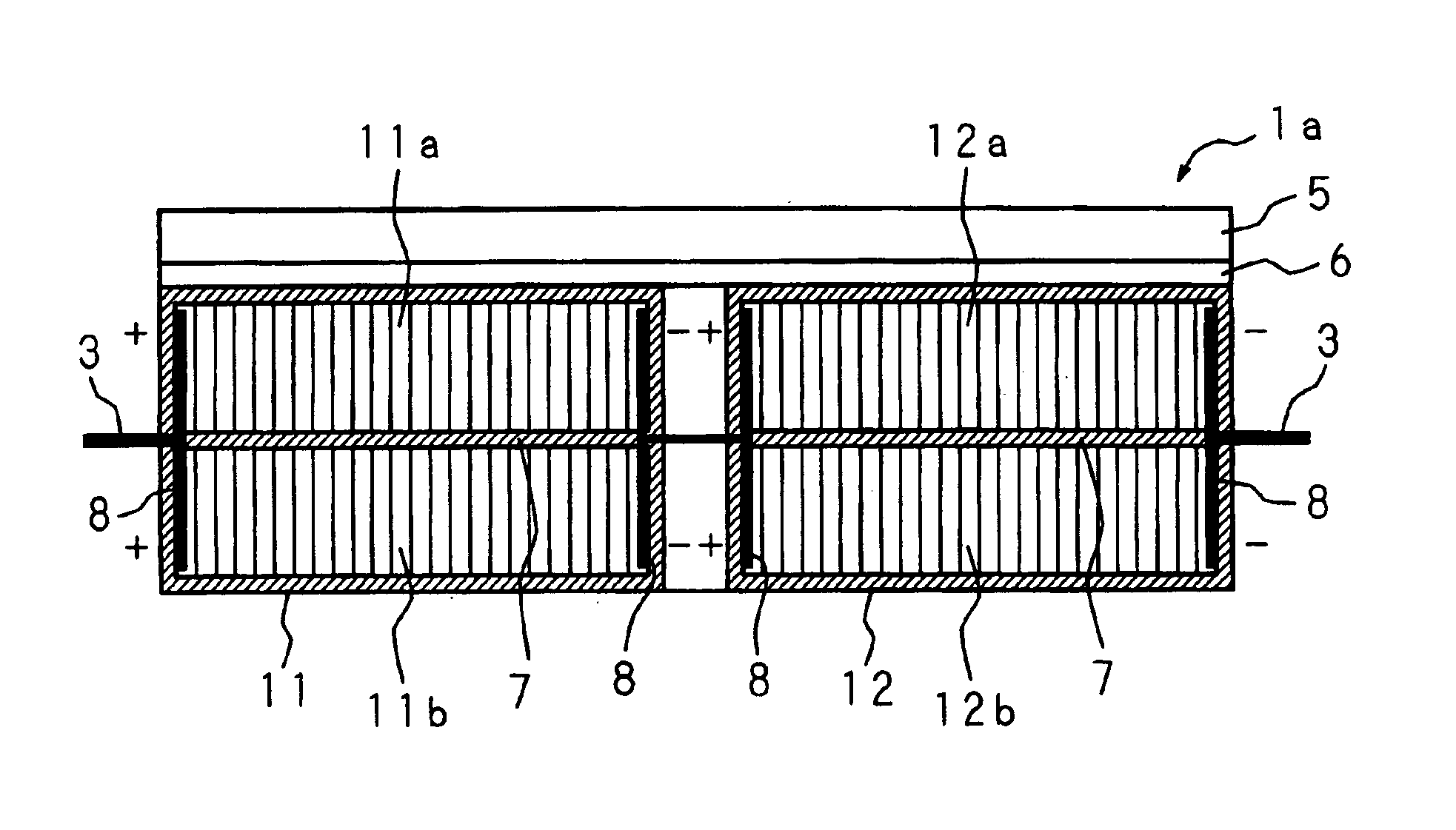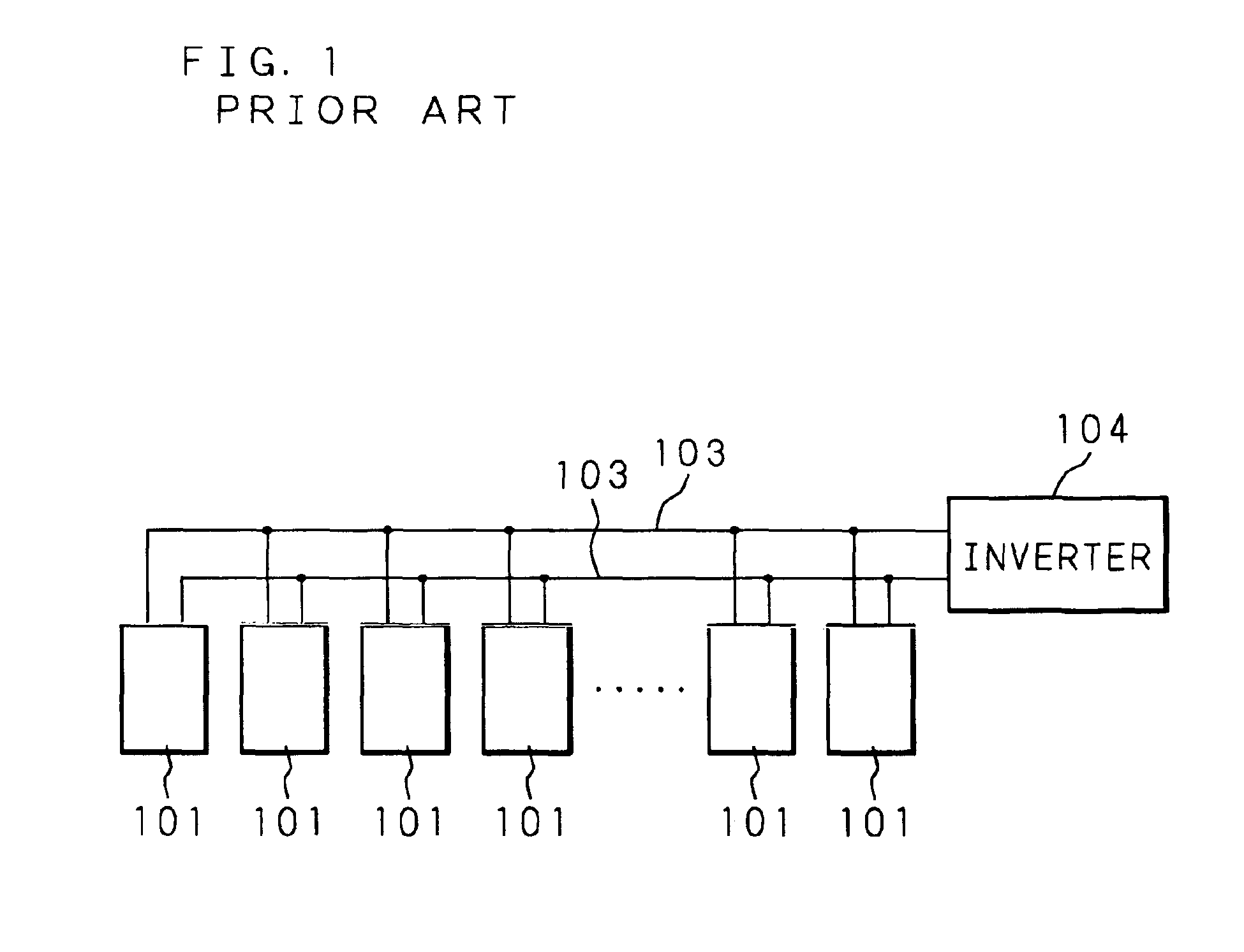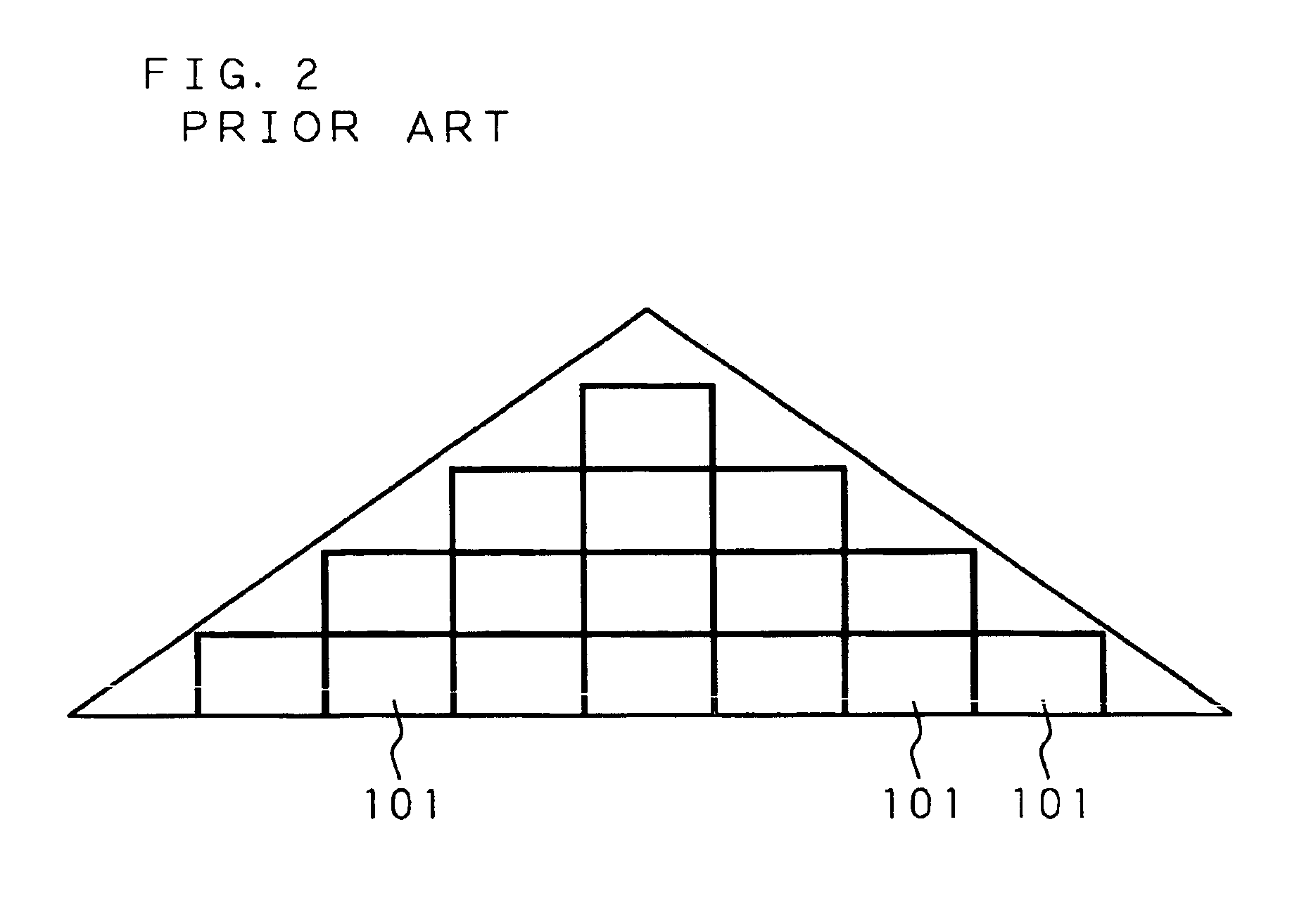Method of installing solar cell modules, and solar cell module
a technology of applied in the field of installing solar cells and solar cells, can solve the problems of increasing the number of process steps to be performed for wiring, and the inconvenience of installation, so as to reduce the time and cost of constructing a photovoltaic power generation system and ensure the effect of installation efficiency
- Summary
- Abstract
- Description
- Claims
- Application Information
AI Technical Summary
Benefits of technology
Problems solved by technology
Method used
Image
Examples
first embodiment
(First Embodiment)
[0035]FIGS. 6A and 6B are illustrations showing the structures of two types of solar cell modules of the first embodiment for use in a solar cell module installation method of the present invention.
[0036]The solar cell module 1a shown in FIG. 6A is constructed by mounting two solar cell sub-modules 11 and 12 side by side on a steel plate 5 functioning as a support. In an area where the solar cell sub-modules 11 and 12 are not mounted, an engagement section 6 for engaging this solar cell module 1a with another solar cell module is formed unitedly by bending the steel plate 5.
[0037]The solar cell sub-modules 11 and 12 are divided into two power generating regions 11a and 11b or 12a and 12b by a laser separated portion 7. Each of these power generating regions 11a, 11b, 12a and 12b is constructed by connecting a plurality of solar cells in series so as to obtain a predetermined output voltage. The two power generating regions 11a and 11b of the solar cell sub-module 1...
second embodiment
(Second Embodiment)
[0042]FIGS. 8A and 8B are illustrations showing the structures of two types of solar cell modules of the second embodiment for use in a solar cell module installation method of the present invention.
[0043]The solar cell module 2a shown in FIG. 8A is constructed by mounting three solar cell sub-modules 21, 22 and 23 side by side on a steel plate 5. In an area where the solar cell sub-modules 21, 22 and 23 are not mounted, an engagement section 6 for engaging this solar cell module 2a with another solar cell module is formed unitedly by bending the steel plate 5.
[0044]Each of the solar cell sub-modules 21, 22 and 23 is divided into three power generating regions 21a, 21b and 21c, 22a, 22b and 22c, or 23a, 23b and 23c by laser separated portions 7. Each of these power generating regions 21a through 23c is constructed by connecting a plurality of solar cells in series so as to obtain a predetermined output voltage. The three power generating regions 21a-21c, 22a-22c a...
third embodiment
(Third Embodiment)
[0051]FIG. 11 is a plan view of an example of the structure of a solar cell module according to the third embodiment of the present invention, and FIG. 12 is a cross section cut along the A—A line of FIG. 11. In these figures, numeral 31 is a metal base made of stainless steel, for example. Two solar cell sub-modules 32 are mounted on the front surface of the metal base 31. Each of the solar cell sub-modules 32 comprises a glass substrate and a plurality of solar cells arranged on the glass substrate, and is mounted on the front surface of the metal base 31 through an EVA resin. In each solar cell sub-module 32, these plurality of solar cells are electrically connected to each other, and one positive wire 33 and one negative wire 33 which are respectively coated with an insulated tape are drawn from each solar cell sub-module 32.
[0052]A raised portion 37 having a first engagement section 37a at its end is formed at one edge of the metal base 31 where the solar cell...
PUM
 Login to View More
Login to View More Abstract
Description
Claims
Application Information
 Login to View More
Login to View More - R&D
- Intellectual Property
- Life Sciences
- Materials
- Tech Scout
- Unparalleled Data Quality
- Higher Quality Content
- 60% Fewer Hallucinations
Browse by: Latest US Patents, China's latest patents, Technical Efficacy Thesaurus, Application Domain, Technology Topic, Popular Technical Reports.
© 2025 PatSnap. All rights reserved.Legal|Privacy policy|Modern Slavery Act Transparency Statement|Sitemap|About US| Contact US: help@patsnap.com



